What is a SIP? A Beginner’s Guide to Systematic Investing
Imagine tucking away a small amount of money every month SIP a piggy bank that magically grows over time. That’s essentially what a Systematic Investment Plan (SIP) does! An SIP is a method of investing in mutual funds where you commit to putting in a fixed amount—like $50 or $100—on a regular basis, typically monthly. This money is then used to buy units of a mutual fund, which pools your cash with other investors’ to invest in stocks, bonds, or a mix of assets.
What makes SIPs special is their simplicity and discipline. You don’t need a huge lump sum to start; even small contributions can snowball into significant wealth over decades, thanks to the power of compounding. Plus, SIPs use a strategy called dollar-cost averaging, where you buy more units when prices are low and fewer when prices are high, smoothing out the ups and downs of the market.
Table of Contents
Why SIPs Shine for Long-Term Investors
- Discipline Made Easy: SIPs automate your investments, turning saving into a habit—like brushing your teeth but for your wallet!
- No Timing Stress: Forget trying to predict market highs and lows; SIPs keep you investing consistently.
- Start Small, Dream Big: With minimums as low as $50, anyone can begin building wealth.
- Expert Hands: Mutual fund managers handle the heavy lifting, picking investments to grow your money.
But here’s the catch: SIPs are tied to the mutual fund you choose. If the fund soars, so does your wealth. If it flops, well, you might not hit your goals. Plus, mutual funds often charge higher fees (called expense ratios) for that professional management, which can nibble away at your returns over time.
What is an ETF? Unpacking Exchange-Traded Funds
Now, picture a basket filled with a variety of goodies—stocks, bonds, or even gold—that you can buy and sell on the stock market like a single share. That’s an Exchange-Traded Fund (ETF) in a nutshell! ETFs are investment funds designed to track the performance of a specific index (like the S&P 500), sector, or asset class. They trade on stock exchanges, meaning you can buy or sell them anytime the market’s open, just like you would with Apple or Tesla stock.
ETFs are loved for their versatility and affordability. Want to invest in the entire U.S. stock market or just the tech sector? There’s an ETF for that! And because most ETFs are passively managed—meaning they simply follow an index rather than relying on a fund manager to pick winners—they tend to come with lower costs.
Why ETFs Appeal to Long-Term Investors
- Low Fees, Big Wins: With expense ratios often below 0.5%, more of your money stays invested.
- Instant Diversification: One ETF can hold hundreds of assets, spreading your risk.
- Trade Anytime: Buy or sell during market hours, giving you flexibility SIPs can’t match.
- See-Through Investing: ETFs reveal their holdings daily, so you always know what you own.
The flip side? ETFs demand a bit more know-how. You’ll need a brokerage account and some comfort with market moves, as you’re the one deciding when to jump in or out. Unlike SIPs, there’s no autopilot here—you’re in the driver’s seat.
SIP vs. ETF: The Long-Term Showdown
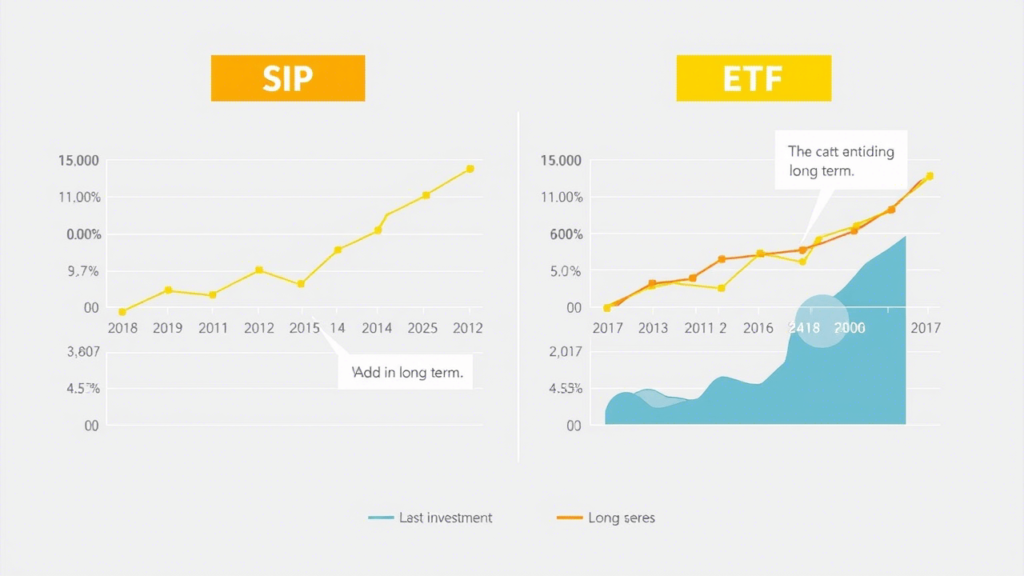
So, which is better for the long term—SIP or ETF? To answer that, let’s pit them against each other across key factors that matter to investors like you. Grab a coffee, because this is where it gets juicy!
1. Cost: Where Does Your Money Go?
- SIP: Since SIPs flow into mutual funds, you’re often paying for active management. Expense ratios typically range from 1% to 2%. Over 20 years, that 1% difference can cost you thousands!
- ETF: Most ETFs are passive, tracking an index with minimal human intervention. Expense ratios can be as low as 0.1% to 0.5%, leaving more cash in your pocket.
Winner? ETFs take the lead here for their cost efficiency, especially over decades.
2. Flexibility and Liquidity: How Fast Can You Move?
- SIP: You’re locked into a schedule—say, $100 every 15th of the month. Need cash? Redeeming mutual fund units can take a few days.
- ETF: Trade whenever the market’s open. Need to sell? It’s instant, like flipping a stock.
Winner? ETFs win for flexibility, perfect if you like staying nimble.
3. Risk and Return: What’s the Payoff?
- SIP: Returns depend on the mutual fund. Equity funds might average 8-10% annually but can swing wildly. A great fund manager could beat the market—or flop.
- ETF: Returns mirror the index they track. An S&P 500 ETF might also return 8-10%, with less chance of underperforming due to human error, but no outperformance either.
Winner? Tie. It’s about your risk appetite—SIPs offer potential upside with more risk; ETFs provide steady, market-matching growth.
4. Tax Implications: Uncle Sam’s Cut
- SIP: Mutual funds might distribute capital gains yearly, triggering taxes even if you don’t sell. Long-term gains are taxed based on your country’s rules.
- ETF: Their structure minimizes taxable events. You only pay taxes when you sell, often at favorable long-term rates.
Winner? ETFs edge out for tax efficiency.
5. Ease of Use: Set It and Forget It?
- SIP: Perfect for hands-off investors. Set up your monthly contribution, and you’re done.
- ETF: Requires a brokerage account and active decisions. You decide how much and when to invest.
Winner? SIPs for simplicity, especially for newbies.
Here’s a quick comparison table to sum it up:
| Feature | SIP | ETF |
|---|---|---|
| Investment Type | Mutual Fund | Exchange-Traded Fund |
| How You Invest | Fixed monthly amounts | Lump sum or anytime |
| Cost (Expense Ratio) | 1-2% | 0.1-0.5% |
| Liquidity | Redeem via fund (days) | Trade instantly on exchange |
| Risk | Varies by fund | Varies by index |
| Tax Efficiency | Moderate | High |
| Ease | Beginner-friendly | Needs market savvy |
Which Wins for the Long Term? It Depends!
Alright, time for the million-dollar question: SIP or ETF for the long haul? The truth is, there’s no one-size-fits-all answer—it hinges on you. Let’s break it down.
When SIP Might Be Your Long-Term Champ
- You’re New to Investing: SIPs are like training wheels—simple, steady, and stress-free.
- You Love Autopilot: Want to invest without checking the market daily? SIPs have your back.
- You Trust Active Management: If you believe a skilled fund manager can beat the market, SIPs in top-performing mutual funds could shine.
Real-Life Scenario: Meet Priya, a 28-year-old teacher. She starts a $100 monthly SIP in a growth mutual fund. Over 30 years, with an 8% return, her $36,000 investment could grow to over $140,000. She barely lifts a finger!
When ETF Might Be Your Long-Term Hero
- You’re Cost-Savvy: Lower fees mean more money compounds over time—crucial for decades-long goals.
- You Want Control: Love picking your investments or timing trades? ETFs give you the reins.
- You’re Tax-Focused: Minimizing tax hits keeps more wealth in your hands.
Real-Life Scenario: Say Alex, a 35-year-old freelancer, invests $5,000 in an S&P 500 ETF with a 0.1% fee. Adding $100 monthly, his nest egg could hit $150,000 in 30 years at 8%, outpacing Priya thanks to lower costs.
The Hybrid Approach
Why choose? Some investors blend both! Use SIPs for steady mutual fund growth and ETFs for low-cost diversification. It’s like having cake and ice cream.
What the Experts Say
Let’s hear from the pros:
- John Bogle, Vanguard Founder: “The biggest enemy of a good plan is the dream of a perfect plan. Stick to the good plan.” SIPs embody this with their consistency.
- Warren Buffett, Investing Legend: “A low-cost index fund is the most sensible equity investment for the great majority of investors.” ETFs fit this bill perfectly.
- Morningstar Research: Studies show low-cost index funds (like ETFs) beat most active funds over 10+ years, thanks to lower fees.
Experts agree: long-term success hinges on discipline and cost control—qualities both SIPs and ETFs can deliver, depending on your style.

Case Study: Priya vs. Alex
Let’s put numbers to the test. Priya and Alex each invest $100 monthly for 30 years at an 8% gross return.
- Priya’s SIP: Her mutual fund has a 1% expense ratio, netting 7%. Total invested: $36,000. End value: ~$113,000.
- Alex’s ETF: His ETF has a 0.1% expense ratio, netting 7.9%. Total invested: $36,000. End value: ~$135,000.
Alex wins by $22,000, all because of that tiny 0.9% fee gap! Over decades, costs matter. But if Priya’s fund beats the market by 1%, she could leap ahead. It’s a gamble—consistency vs. cost.
Conclusion: Your Long-Term Winner
So, SIP or ETF? Both can pave the road to long-term wealth, but your choice depends on your journey:
- Pick SIP if you want simplicity, discipline, and a hands-off approach. It’s perfect for building wealth step-by-step.
- Choose ETF if you crave low costs, flexibility, and tax perks. It’s ideal for the proactive investor.
The real secret? Start now. Time is your biggest ally in the investment game. Whether it’s SIP’s steady drip or ETF’s cost-efficient sprint, consistency and patience will get you to the finish line. Not sure? Chat with a financial advisor to tailor your plan. Here’s to your financial future—may it be bright and prosperous!
FAQs: Your SIP and ETF Questions Answered
- What’s the minimum investment for SIP and ETF?
- SIP: Often as low as $50/month, depending on the mutual fund.
- ETF: Just the price of one share—could be $20 or $200, varies widely.
- Can I switch between SIP and ETF?
- Yes! Stop your SIP and buy ETFs, or sell ETFs to fund an SIP. Watch for exit fees or taxes, though.
- Which is safer: SIP or ETF?
- Neither is “safer”—it depends on the assets. Diversified funds or indices lower risk for both.
- Do SIPs or ETFs offer tax benefits?
- No direct benefits, but ETFs are more tax-efficient. Some mutual funds (e.g., ELSS in India) might offer deductions.
- Can I lose money with SIP or ETF?
- Yup, markets can dip. But over 20-30 years, historical trends suggest growth outweighs slumps.
- How do I start?
- SIP: Open a mutual fund account online or via a broker.
- ETF: Get a brokerage account, pick an ETF, and trade away!





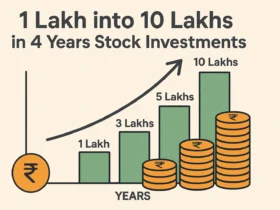


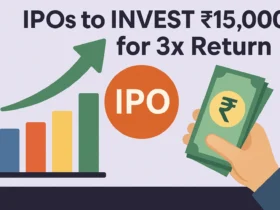











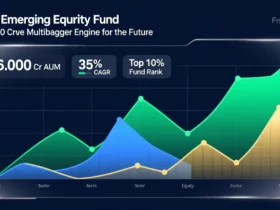
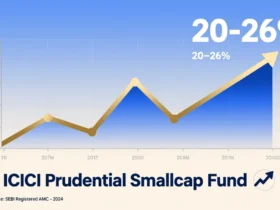



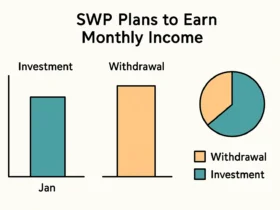

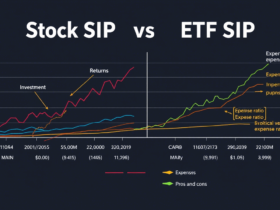

1 Comment